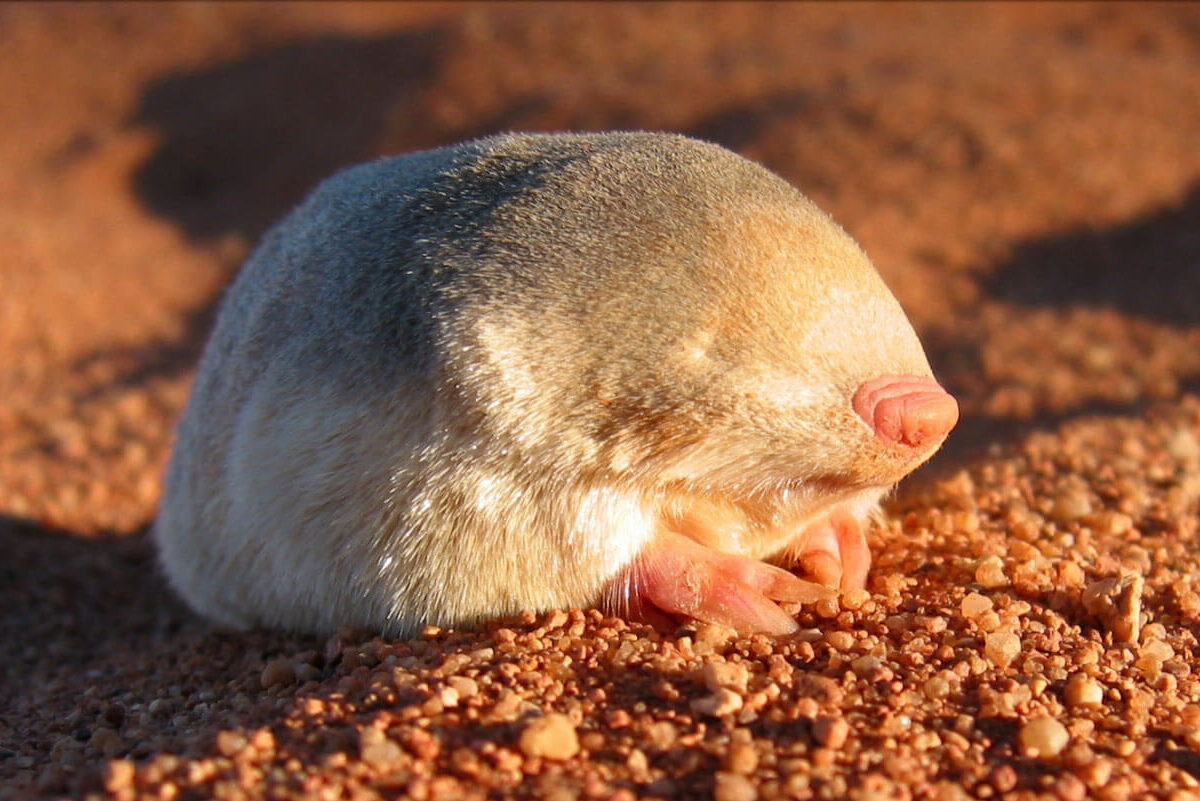
A once-elusive golden mole, the De Winton’s golden mole (Cryptochloris wintoni), presumed extinct since 1937, has been rediscovered near Port Nolloth in north-west South Africa.
Known for its iridescent fur and subterranean lifestyle, this mole uses oily secretions for sand “swimming,” avoiding conventional tunnels and making detection challenging. Blind and dependent on keen hearing, it evades surface movements by bolting.
Featured on Re:wild’s “most wanted” lost species list, the mole reappeared after an 86-year absence, thanks to a two-year search led by conservationists and Jessie, a border collie trained to detect golden moles.
“It was very exciting to be part of a team looking for lost species. The cherry on the cake is finding one,” said Esther Matthew, senior field officer at the Endangered Wildlife Trust (EWT).
The collaboration with Jessie involved the dog alerting researchers by lying down at the scent’s location. Jessie’s reward for successful scent detection was playtime with her tennis ball.
During stops, soil samples were collected for environmental DNA (eDNA) testing, which identifies DNA from skin cells, urine, faeces, and mucous released by moles moving through the dunes.
The team covered up to 18km (11.2 miles) of dunes daily, collecting 100 sand samples and eventually encountering two De Winton golden moles.
While initial field research in 2021 hinted at the mole’s presence, genetic sequencing confirmed the finding due to similarities with other golden mole species.
“Though many people doubted that De Winton’s golden mole was still out there, I had good faith that the species had not yet gone extinct,” said Cobus Theron, senior conservation manager at EWT and a member of the search team. “Now, not only have we solved the riddle, but we have tapped into this eDNA frontier where there is a huge amount of opportunity – not only for moles but for other lost or imperilled species.”
The De Winton’s golden mole, among South Africa’s 21 known golden mole species, shares its habitat with other endangered moles, including the Van Zyl’s golden mole.
Subsequent to the 2021 research, EWT discovered four more De Winton’s golden mole populations, indicating a potentially thriving population near Port Nolloth. However, the area remains unprotected and faces threats from diamond mining.
“We need to identify areas to focus our conservation [efforts] on … and secure protected areas to make sure there are still strongholds for these species,” said JP Le Roux, a former EWT field officer.
——————————————————————————
At Natural World Fund, we are passionate about stopping the decline in our wildlife.
The decline in our wildlife is shocking and frightening. Without much more support, many of the animals we know and love will continue in their decline towards extinction.
When you help to restore a patch of degraded land through rewilding to forests, meadows, or wetlands, you have a massive impact on the biodiversity at a local level. You give animals a home and food that they otherwise would not have had, and it has a positive snowball effect on the food chain.
We are convinced that this is much better for the UK than growing lots of fast-growing coniferous trees, solely to remove carbon, that don’t actually help our animals to thrive.
This is why we stand for restoring nature in the UK through responsible rewilding. For us, it is the right thing to do. Let’s do what’s right for nature!
Donate today at https://naturalworldfund.com/ and join in the solution!

